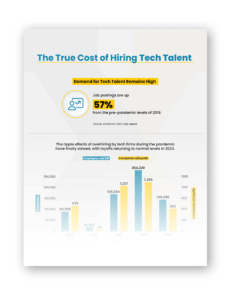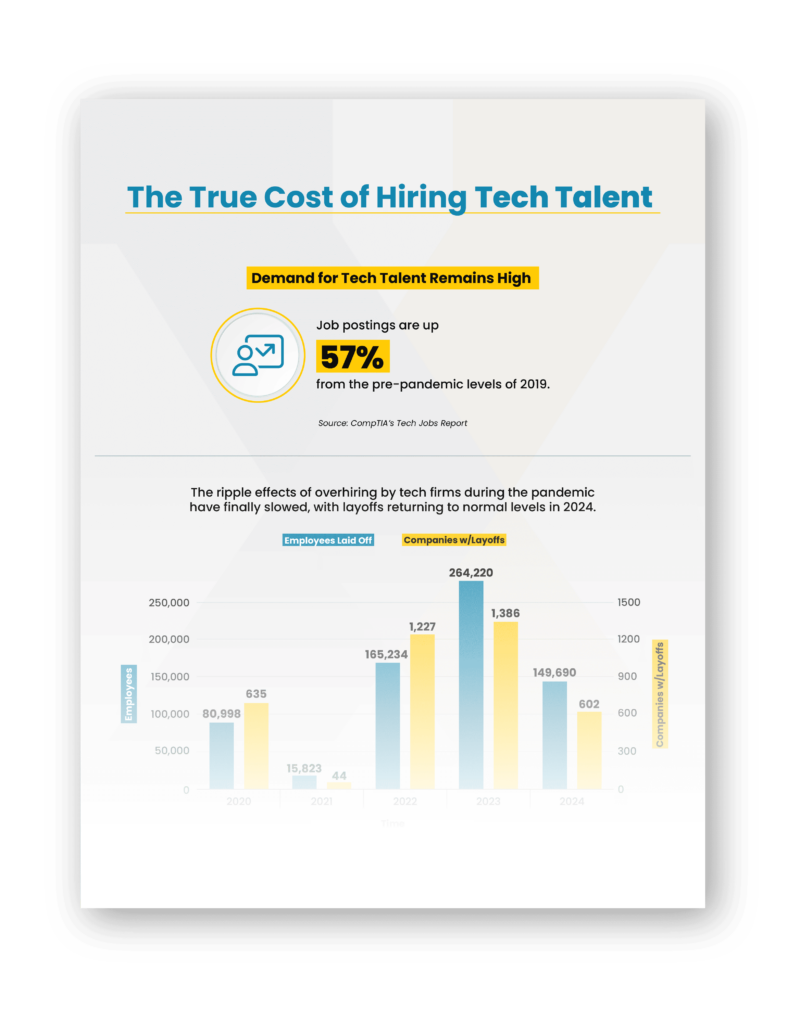In brief:
- ITSM provides IT departments the tools and processes to enhance service delivery, improve efficiency, and align IT services with business needs.
- ITSM’s core objective is to align IT services with an organization’s greater strategic goals.
- Benefits of ITSM include delivering IT as a service, improving overall performance and productivity, and driving efficiency and end-user satisfaction through integration of next-gen technology like automation.
The role of the IT organization has changed from being a support function to increasingly becoming a strategic business enabler, integral to decision-making processes, and influencing business strategy and operational tactics alike. This change has been shaped by rapid technological advancements, labor shortages, heightened competition, and persistent macroeconomic uncertainty.
Yet, most IT departments today are still operating under unstructured, break-fix approaches which keep them stuck in firefighting mode, prevent them from evolving into the strategic partner the company needs, and affect their quality of work and end-user experiences. Robert Half’s 2024 salary guide found that 48% of tech workers say their feelings of burnout are increasing, with 57% citing “heavy workloads” and 37% identifying “not enough resources” as the causes.
More worryingly, a 2023 Ivanti report found a quarter of IT professionals were seriously contemplating leaving their jobs within the next six months, potentially costing U.S. companies upwards of $145 billion.
This makes the importance of using structured Information Technology Service Management (ITSM) practices more evident than ever before. ITSM provides IT departments the tools and processes to enhance service delivery, improve efficiency, standardize services, and align IT services with business needs, helping them evolve from functional experts into truly innovative and service-oriented resources.
Implementing ITSM practices, in addition with modern tools, creates the well-run IT department businesses need to thrive today – infused with a strong services mindset, true business insight, and accelerated speed to market. Organizations with modern, integrated ITSM practices report benefits such as improved response to failures (41%), increased collaboration among teams (38%), and lower IT operations costs (35%), a 2023 report from ESG by TechTarget found.
Let’s examine how.
What is IT Service Management?
ITSM establishes processes and procedures that optimize the use of technology and the services built around it. It covers everything that falls under the IT umbrella, from incident management and service request resolution to the implementation of IT operations and asset management. The benefits of ITSM stem from its core objective of aligning IT services with an organization’s strategic goals. ITSM focuses IT on delivering value to internal customers, with key targets that include:
- A proactive, process-oriented approach to service management
- Better alignment with business needs
- Increasing efficiency and effectiveness to lower IT costs and increase ROI
- Greater transparency and accountability
- Continuous addition of new functions that drive user satisfaction
- Driving digital transformation through ITSM tools that enable next-generation technologies like automation
ITSM typically goes hand-in-hand with an ITIL (IT Infrastructure Library) framework, and it’s a common misconception that they’re interchangeable. Think of it this way: ITSM is the practice of planning and delivering IT services; ITIL is a highly regarded framework that generally guides how ITSM is implemented.
5 critical benefits of ITSM for your business
1. ITSM delivers IT as a service
ITSM is based on the idea that IT exists to deliver a service to the business. Its policies and procedures are carefully structured so IT professionals can work smarter, faster, and truly benefit the organization as a whole.
Instead of working in silos and reacting to incidents in an ad hoc manner that often feels frustratingly slow to end users, ITSM structures IT service models like a business. That includes repeatable and scalable best practice processes, clearly defined roles and responsibilities for IT staff, an easy-to-understand catalog of services tailored to organizational needs, and a method for measuring and improving operational performance.
As a result, the business perceives IT as a strategic partner for continual service improvement enhancing organizational efficiency, delivering actionable insights, and proactively solving problems. ITSM also infuses IT with the flexibility to accommodate rapid change.
2. A well-run IT department improves overall performance and productivity
In today’s digital world, a well-run IT department is a necessity, not a luxury. Nearly one in five organizations responding to Flexera’s 2023 State of Tech Spend report spend half a billion dollars on IT annually but estimate as much as a quarter of their software spend is wasted on excessive licenses, inefficient procurement processes, lack of visibility into SaaS, cloud, and other non-on-premise resources, etc.
ITSM practices help the entire business function at its best by creating a more efficient, productive IT department that delivers better-fitting services.
For instance, ITSM builds metrics for assessing IT performance, enabling quick adjustments that keep service levels high. It also utilizes ITIL guidelines to establish standardized processes for problem management so concerning trends are identified and addressed at an early stage before they significantly impact business performance.
Change management is another key area ITIL covers to minimize costly business disruptions. Managing change properly creates a nimble IT environment that can respond quickly to new requirements without impacting the availability of critical services.
ITSM also strengthens the relationship between the business and IT with structured processes for streamlining communication. Building a high-performance service desk, for instance, creates a clear pathway for keeping operations running smoothly and boosting user satisfaction with an effortless technology experience.
3. ITSM tools drive efficiency and end-user satisfaction through automation and self-service
Businesses are accelerating spending on next-generation technologies to catalyze business innovation and organizational change amid growing competition, uncertain economic conditions, and rapid technological advancements. Worldwide spending on Digital Transformation (DX) is forecast to reach almost $4 trillion in 2027, with DX investments projected to become or even surpass two-thirds of all IT spending by 2027, according to IDC’s May 2024 Worldwide Digital Transformation Spending Guide.
To cope with this fast-paced change, service management needs to become more agile and responsive. Yet, only 8% of organizations were prioritizing automation for repetitive IT tasks in 2023, despite its potential to alleviate the workload pressures faced by IT teams, the Ivanti report found.
Many IT service management processes involve mundane, repetitive tasks – like onboarding employees – that drain time and productivity from IT staff, and are ripe for automation. Applying ITSM automation to these workflows will drive efficiency in IT – lowering operational costs and freeing human staff for higher-value work. It also eliminates the human error that typically plagues repetitive activities and drives business satisfaction by speeding deployment.
Self-service capabilities are another way ITSM tools drive efficiency. For instance, ITIL knowledge management processes create a knowledge base that users can access to fulfill common service requests or resolve simple incidents without involving IT staff.

4. ITSM establishes greater control and oversight for IT operations
Under a reactive service model, any IT professional might be tasked with any issue that comes in and multiple people might make changes to a project. Understandably, that causes confusion about priorities, roles and responsibilities, appropriate service levels, who should make decisions, and how colleagues should interact when resolving incidents.
ITSM builds a structure that creates transparency and accountability. Formalizing focus for IT staff and standardizing processes for basic IT functions creates a visible line of sight between individual contributions and business results.
When IT staff have clear roles, they become accountable for the services they are responsible for delivering. Standardizing processes also leads to more predictable results and faster, timely delivery of critical services.
5. Implementing ITSM practices can transform IT into a strategic partner for the business
The number of day-to-day operational activities IT must address is never going to diminish. In fact, 73% of IT and security professionals report increased workloads due to hybrid/virtual work adoption creating more service desk requests from home-based employees and the need to manage shadow IT, the Ivanti report found.
Given this, perhaps the greatest value ITSM provides is the bandwidth it delivers to focus on activities that drive innovation and growth.
By optimizing time-consuming, routine tasks with standardization, more efficient processes, and automation – and routing them appropriately to junior team members – ITSM frees senior IT staff to focus on strategic services that add commercial value.
Outsourcing done right can help organizations accelerate their adoption of ITSM practices
The importance of IT Service Management is clear – helping companies achieve greater efficiencies, reduce costs, and limit risk. But the severe IT labor shortage makes it difficult for companies to implement ITSM in-house.
Nearly two-thirds of North American IT leaders surveyed by IDC said that a lack of skills has resulted in missed revenue growth objectives, quality problems, and a decline in customer satisfaction. By 2026, IDC forecasts more than 90% of organizations worldwide will feel the pain of the IT skills crisis, amounting to some $5.5 trillion in losses caused by product delays, impaired competitiveness, and loss of business.
Outsourcing your ITSM practices to a reputable managed services provider like Auxis can instantly deliver the people, processes, and technology that lead to success. Exceptional outsourcers have deep experience implementing ITSM best practices, access to the latest technologies, and motivation to meet and exceed contractual service levels by driving efficient, continuous improvement in the organization.
Today, IT services are more critical to business success than ever before. Outsourcing service management solutions to an exceptional managed service provider enables organizations to benefit from cost-effective, efficient, and scalable IT solutions and stay ahead in a competitive market.
Want to learn more about ITSM best practices and how to implement them? Schedule a consultation with our IT service leaders today! Or visit our resource center to learn more IT trends, strategies, and success stories.




